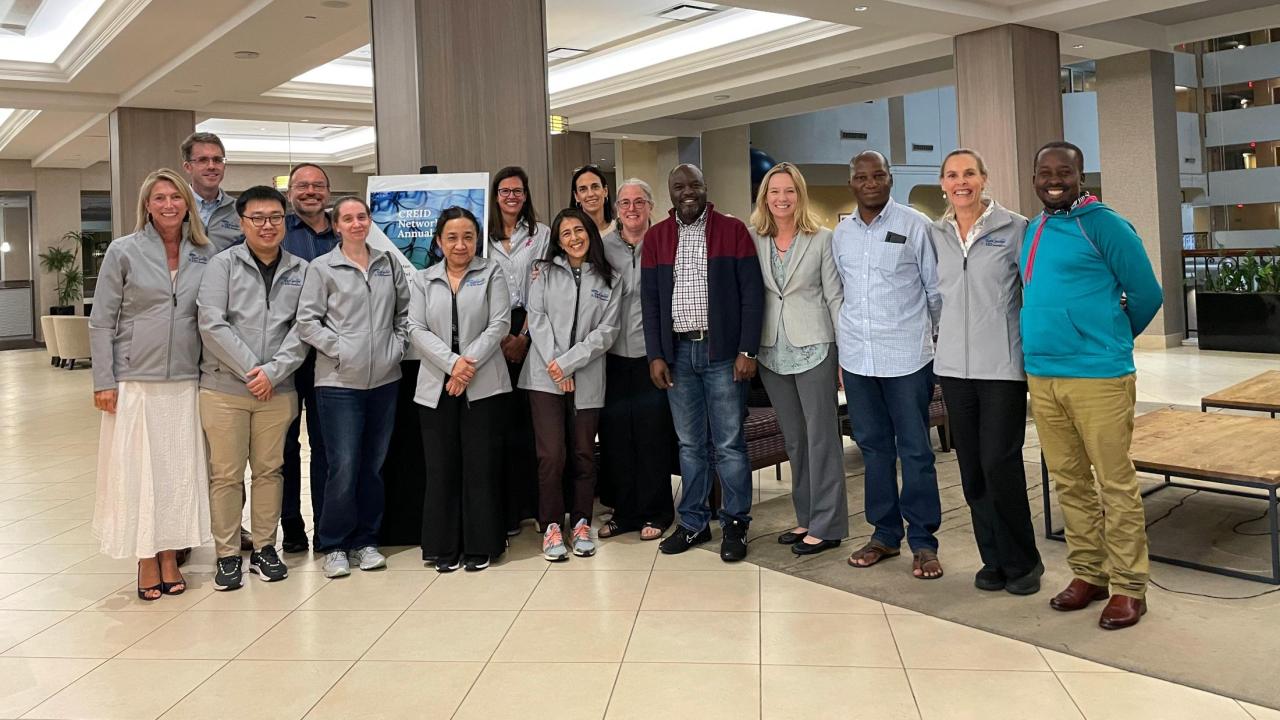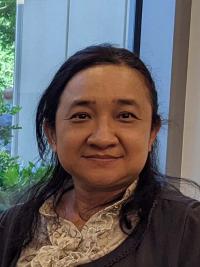
CREID Annual Meeting 2023
In June of this year, the EpiCenter for EID Intelligence team gathered for the 2023 CREID Annual Meeting, a network-level meeting that brought together all ten CREID Research Centers, the coordinating center, representatives from NIAID, and numerous stakeholder groups. This year, fifteen members of the EpiCenter attended the meeting, providing an invaluable opportunity for our project leads from Peru, Uganda, and the United States to meet in person for the first time since the project's launch in 2020. Sharing our expertise and exchanging knowledge with other attendees, our team delivered nine research talks, participated in a panel discussion on emerging diseases and climate change, and led a workshop focused on the utilization of GIS and Mapping tools for emerging infectious disease research. Moreover, the meeting served as a platform to foster collaborations across research centers, providing an avenue for us to gain deeper insights into the work conducted by our network colleagues from around the world and discuss potential synergistic activities. Overall, the CREID Annual Meeting was a valuable experience for the EpiCenter team, enabling us to strengthen existing connections, forge new collaborations, and gain a broader perspective on the global landscape of emerging infectious disease research.
Below we highlight a few of our researchers that presented at the annual meeting.
Ohnmar Aung, CREID Pilot Award Principal Investigator

Over the course of 25 years, I have served as a public health and health social science researcher in Myanmar, specializing in reproductive health and infectious diseases of public health concern. Throughout my career, I have taken the lead in various projects that embrace the One Health approach, collaborating with the UC Davis One Health Institute, the Smithsonian Global Health Program, and currently, the EpiCenter. In 2022, I was honored to receive a CREID Pilot Research Award, enabling me to investigate the frequency and diversity of sarbecovirus exposures among human cohorts and develop a multiplex bead-based assay for sarbecovirus detection. This study provides a unique opportunity to utilize archived human and bat samples and enhance our technical capabilities for investigating SARS-related viruses, both in the field and laboratory settings. As this study nears its completion, I look forward to sharing the findings with the communities from which these samples were originally collected. By doing so, we aim to raise awareness about emerging infectious disease risk and preventive measures people can take to reduce the potential for spillover of viruses from animals to humans. Furthermore, I aim to expand upon this work by comparing virus exposure between developing countries within the Southeast Asia Region that share similar ecosystems and face potential future risks. By building a better understanding of how people are exposed to emerging viruses, we can foster a better understanding of disease transmission dynamics, bolster risk management strategies, and ultimately contribute to the prevention of future pandemics.
Nahabwe Haven, Human Surveillance Lead, Uganda

Over the last 10 years, I have worked as a public health specialist with communities at the human animal interface around the Bwindi Impenetrable National Park (BINP) in rural Uganda. My work was focused primarily on health promotion and education among indigenous and local communities and as a member of the local district task force for surveillance, contact tracing, and community engagement for infectious diseases. In 2020 I joined the EpiCenter as a Human Surveillance Lead for Uganda to support research on the dynamics of emerging and reemerging diseases in the population around the BINP and the city of Kabale. At the CREID Annual Meeting, I shared the findings of our study about local community knowledge and perceptions of zoonotic disease risk and outlined the subsequent gaps in understanding that exist. We are also in the process of writing a publication to further distribute these findings to the scientific community. The CREID Annual Meeting was my first time traveling to the United States and it offered a great opportunity to engage more broadly across the CREID network, including connecting with researchers working throughout East Africa and other regions with shared interests. I am hopeful that the connections I established during the meeting will evolve into research collaborations in the future. I also look forward to communicating our research findings back to the communities that are most at risk of zoonotic spillover, while helping foster a desire to conserve and protect wildlife species that may be potential pathogen reservoirs.
Following the CREID Annual Meeting, I participated in the Rx One Health training program at the UC Davis One Health Institute, where I was one of 29 participants from 10 countries around the globe. I received additional training about the application of One Health approaches to global challenges. This training helped reinforce my appreciation of the One Health concept, especially how disease transmission potential (e.g., through spillover events and outbreaks) is affected by changes in the environment, wild and domestic animal interactions (with each other and with people), and human populations and activities. Wrapping up my visit to UC Davis, I also presented a seminar at the One Health Institute which expanded on the human focus group research we’ve conducted thus far and elaborated on next steps as we begin a new project focused around developing and deploying a community health surveillance platform designed to monitor and detect potential emerging infectious disease events.
Tatiana Quevedo, Wildlife Surveillance Lead, Peru

As a wildlife veterinarian with over two decades of experience focusing on Peruvian wildlife, I have collaborated with various research teams working on the surveillance of zoonotic diseases in the Peruvian Amazon. My expertise encompasses several wildlife taxa known for their potential role in disease transmission, including bats, non-human primates, and rodents. Currently, I lead wildlife field operations at the EpiCenter for Emerging Infectious Disease Intelligence in the city of Iquitos, Peru, and the surrounding Amazonian region. During the CREID Annual Meeting, I presented preliminary findings of novel alphacoronaviruses detected in six bat species. I further shared that our research thus far has not detected any coronaviruses or arboviruses in non-human primates, despite their frequent close contact with humans and potential vectors. The Annual Meeting also afforded me the opportunity to interact with the One Health Institute team from UC Davis and the EpiCenter teams from Myanmar and Uganda, whose work aligns closely with ours in Peru. We engaged in enriching exchanges with these teams where we discussed shared experiences, similarities in our methodologies, and the challenges encountered during fieldwork. The feedback we received during this meeting has significantly bolstered our ongoing efforts in the field.
Just prior to traveling to the CREID Annual Meeting, I delivered a seminar for the One Health Institute at UC Davis, focused on viral surveillance in bats and non-human primates. This occasion allowed me to foster meaningful connections with colleagues and students while gaining insights into the research endeavors conducted by the One Health Institute. Furthermore, I had the opportunity to tour multiple UC Davis facilities and laboratories, learn more about the work conducted on campus, and engage in productive meetings to strategize about the next phases of our research. We discussed incorporating new tools, particularly Geographic Information Systems (GIS) for data collection to complement our research findings. Additionally, we explored possibilities for acquiring complementary data to enhance the comprehensiveness of our research outcomes. These meetings offered valuable insights and direction for our ongoing investigations.
